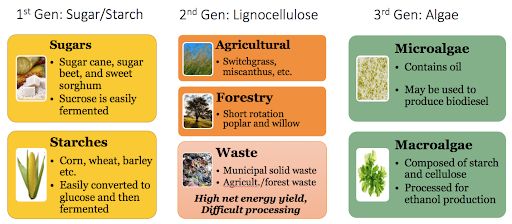1st Generation Biofuels

Biofuels can be groups into 4 categories based on the characteristics of their source Biomass, their performances as renewable sources of energy and the technologies they utilise. 1st Generation Biofuels are produced from Biomass resources that may also be food sources such as oil or Sugar Crops. 2nd Generation Biofuels are produced from non-food Biomass resources such as woody Biomass materials. 3rd Generation Biofuels are produced from alternative Biomass resources such as Algae. 4th Generation Biofuels are produced from Biomass resources where the aim is not only to produce sustainable energy, but also provide a mechanism of capturing and storing CO2.
1st Generation Biofuels are produced directly from food crops, abstracting oils or sugars to produce fuels such as biodiesel or bioethanol. Crops such as wheat and sugar are the most widely used Feedstock for bioethanol while oil seed rape has proved a very effective crop for use in biodiesel. First Generation Biofuels have a number of wider challenges. There is ongoing debate over the net GHG and CO2 emission performances of these biofuels as the production and processing of these fuels can result in the release of more carbon than their Feedstock’s capture in their growth, particularly if any land use change has occurred. The most contentious issue with first generation biofuels is ‘fuel vs food’, as the use of food crops for biofuels can result in increased volumes of crops being diverted away from the global food market – risking increase in food prices and regional food availability issues.
People who contributed to this article:
Dr. Andrew Welfle